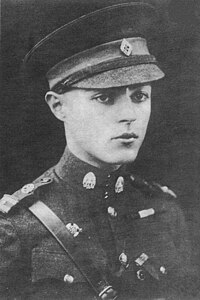Siamese Emperor
| Emperor of the Siamese Empire | |
|---|---|
| 天皇 | |
Imperial | |
| Incumbent | |
 | |
| Kraisee since 22 February 1930 | |
| Details | |
| Style | His Imperial Majesty or His Majesty |
| First monarch | Vajirunhis |
| Formation | 5 November 1918 |
| Residence | Grand Palace (ceremonial) Dusit Palace (residential) |
| Appointer | Hereditary |
The Siamese Emperor is the head of state and the head of the Chakri Dynasty of Siam. It was introduced in 1918 following the Central Powers victory in the First World War where Siam, as a participating member of the alliance had emerged victorious over their French adversaries, having successfully conquered its colonies in Indochina. Its inaugural holder, King Vajirunhis is the first Siamese monarch to ever use the title of emperor, in both modern and ancient Siamese history.
In accordance with the Constitution of Siam, the Siamese Emperor is largely designated both as a symbolic and administrative role, with some of the emperor's executive powers being delegated instead to an elected Prime Minister. Nevertheless, as monarch, the Siamese Emperor, alongside being the country's head of state is also the Head of the Royal Siamese Armed Forces, and the upholder of the Buddhist faith in the country. There are approximately two royal residences belonging to the Siamese Emperor, which consists of a ceremonial and a residential palace, namely the Grand Palace and Dusit Palace.
Creation
In 1910, Crown Prince Vajirunhis succeeded his father, King Chulalongkorn as King Rama VI. Initially, while the new king's reign proved largely peaceful, the onset of the First World War in 1914 proved crucial to Siamese stability as both of its neighbours, France and the United Kingdom were both at war with Germany. On August 1917, after much deliberation regarding Siam's possible entry into the war, King Rama VI declared Siam's entry into the war on the side of the Central Powers alongside Germany and its allies.
In the span of a few months, a successful campaign to retake its lost posessions in French Indochina was mounted which culminated in a French surrender at Hanoi on February 2nd. On November 3rd 1918, the Berlin Peace Conference ultimately confirmed the Allied defeat, which in turn reaffirmed Siam's gains in Indochina. Two days later, amidst much nationalistic celebrations commemorating the Siamese victory, a proclamation ceremony was held at the Grand Palace where King Rama VII was proclaimed Siamese Emperor. The title, which was largely based on the title of German Emperor itself also faced similar controversies regarding its naming, as some of the king's advisors had mostly suggested for it to be named Emperor of Siam, a style similar to that of the Emperor of China title held by the previous Qing rulers in neighbouring China. However, the king himself firmly objected to the suggestion, believing that his advisors' suggestion would destabilise relations between the Siamese government and its respective Laotian, Cambodian and Vietnamese subordinates.